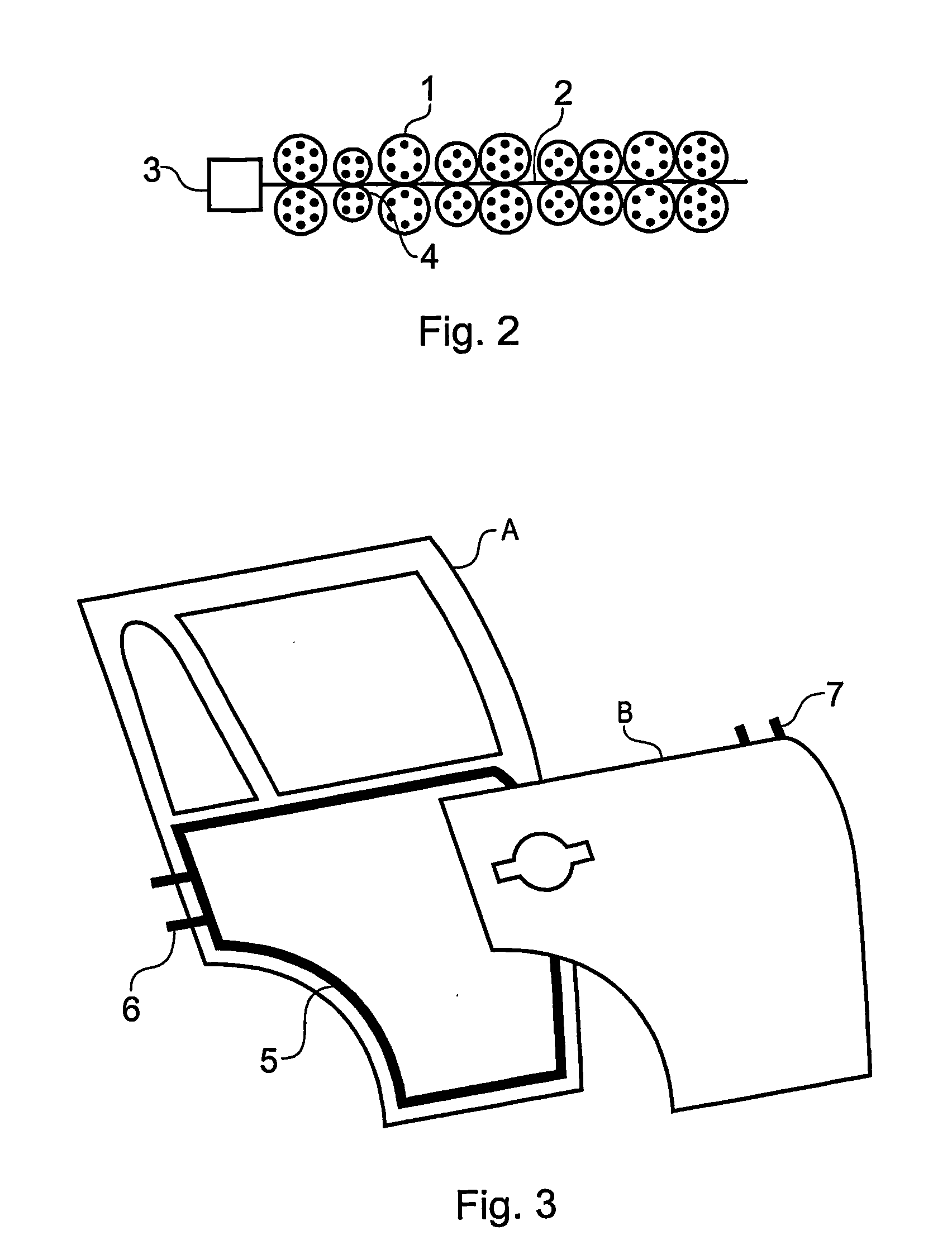Method and apparatus for bonding and debonding adhesive interface surfaces
a technology of adhesive interface surfaces and methods, applied in the direction of glue vessels, engine components, lamination, etc., can solve the problems of musculoskeletal conditions in the fitters themselves, cheese-wires can overheat, wires themselves can break, etc., to reduce the time of dispersion, uniform distribution, and the effect of the same longevity
- Summary
- Abstract
- Description
- Claims
- Application Information
AI Technical Summary
Benefits of technology
Problems solved by technology
Method used
Image
Examples
examples
[0107] With reference to the table below, various samples of microsphere compositions have been tested. It will be appreciated that the temperature activation ranges are dependent on the intended uses and as such on which type of thermal energy is applicable for curing / bonding / debonding. We have found that a typical composition for direct automotive glazing should comprise about 3% microspheres in the cleaner and 5% in the primer for thermosetting adhesives and 5-10% for thermoplastic adhesives. For metal bonded surfaces the composition should be in the range 5-10% at their interface surfaces in the absence of a primer. In the instance where the adhesive layer is of a comparable thickness to the diameter of the microsphere and can be activated on both sides of the layer about 5% of microspheres is required.
PUM
| Property | Measurement | Unit |
|---|---|---|
| Temperature | aaaaa | aaaaa |
| Temperature | aaaaa | aaaaa |
| Length | aaaaa | aaaaa |
Abstract
Description
Claims
Application Information
 Login to View More
Login to View More - R&D
- Intellectual Property
- Life Sciences
- Materials
- Tech Scout
- Unparalleled Data Quality
- Higher Quality Content
- 60% Fewer Hallucinations
Browse by: Latest US Patents, China's latest patents, Technical Efficacy Thesaurus, Application Domain, Technology Topic, Popular Technical Reports.
© 2025 PatSnap. All rights reserved.Legal|Privacy policy|Modern Slavery Act Transparency Statement|Sitemap|About US| Contact US: help@patsnap.com



